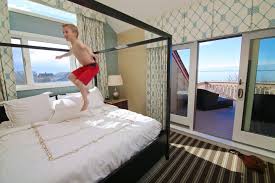What’s Doing in Nairobi
First-time visitors to the Kenya have misconceptions that Nairobi will be some dusty backwater where narrow streets are filled with destitute people ready to pounce on your wallet. Much of this stems from an outbreak of thievery that occurred in the late 90s, earning the city the nickname, “Nairobbery.” Today, especially now that the post-election violence of January 2007 is in the rear view mirror, Nairobi is a relatively safe and cosmopolitan hub of 3.5 million people in East Africa. The poor, who flood out of their shanties every morning to walk to nearby factories, merge with a growing middle and upper class, whose gated estates in the western suburbs of Karen and Langata have far more in common with Boca Raton than Bogota. Travelers are starting to realize that Nairobi is worthy of more than a one-night stopover on the way to safari. At the David Sheldrick Elephant Orphanage, west of the city centre in Langata, baby elephants whose parents have been killed by poachers are raised by workers who actually sleep in their stalls to comfort the young. When they’re old enough, they’ll be brought back to the wild. The suburb of Karen was named after Out of Africa author Karen Blixen, who wrote under the pen name Isak Dineson. Visit the estate she lived in from 1913 to 1931, now home to the Karen Blixen Museum. The grounds, dotted with the prehistoric looking candelabra cacti, overlook the Ngong Hills, and are worth the price of admission alone.

 There’s a reason inn-to-inn bike and hike trips are growing in popularity. People love to have a day of adventure and then reward themselves with a night of fine food and pampering. That’s the premise behind
There’s a reason inn-to-inn bike and hike trips are growing in popularity. People love to have a day of adventure and then reward themselves with a night of fine food and pampering. That’s the premise behind  Brewster Travel Canada has been involved with the Canadian national parks since 1892, when the founders, two teenaged brothers, Jim and Bill Brewster, began guiding guests through the Rockies. If they were around today, the Brewster brothers would be in awe of their company’s latest development. Opening in Jasper National Park this coming May is the
Brewster Travel Canada has been involved with the Canadian national parks since 1892, when the founders, two teenaged brothers, Jim and Bill Brewster, began guiding guests through the Rockies. If they were around today, the Brewster brothers would be in awe of their company’s latest development. Opening in Jasper National Park this coming May is the  When it opens in the fall of 2018,
When it opens in the fall of 2018,  Driving along Route 6A in Brewster, it’s hard to miss Boston banker Samuel Nickerson’s turn-of-the-century mansion. Today, it’s the centerpiece of the sprawling
Driving along Route 6A in Brewster, it’s hard to miss Boston banker Samuel Nickerson’s turn-of-the-century mansion. Today, it’s the centerpiece of the sprawling